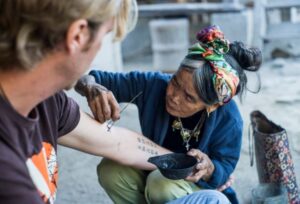
. Its rise to prominence was rapid and undeniable, captivating millions of women and men across the globe. However, behind this empire lies a poignant story of its founder, Roy Raymond, a visionary who fundamentally changed how women (and men) shop for lingerie but whose life took a tragic turn.
This article delves deep into the life of Roy Raymond, the origins of Victoria’s Secret, and how his creation grew to become a household name, along with the difficulties that plagued his later life.
Early Life and Inspiration Behind Victoria’s Secret
Roy Raymond was born in 1947 and grew up in Connecticut. He attended Tufts University and later Stanford University’s Graduate School of Business. His path, however, was not initially marked for the retail world, let alone lingerie. In fact, the inspiration behind Victoria’s Secret came from a personal, somewhat uncomfortable experience.
In the 1970s, Raymond faced an awkward situation when he tried to buy lingerie for his wife at a department store. At the time, buying lingerie for women was a very different experience compared to today. The selection was limited, bland, and often embarrassing for men. Department stores were not designed with men as potential customers in mind, and the staff would either dismiss them or treat them with discomfort. Similarly, for women, lingerie shopping felt utilitarian and anything but glamorous.
Raymond recognized this gap in the market. He envisioned a store that would make lingerie shopping a more comfortable and appealing experience for men, while simultaneously offering women stylish, sexy undergarments that were presented in a luxurious setting. His vision was clear: to create a store that had the feel of a Victorian boudoir, evoking an aura of elegance and seduction while maintaining an air of privacy and comfort for male shoppers. This vision gave birth to Victoria’s Secret.
The Birth of Victoria’s Secret
In 1977, Roy Raymond, along with his wife Gaye, opened the first Victoria’s Secret store in Palo Alto, California, with a $40,000 loan from his parents and an additional $40,000 in bank loans. The store was named “Victoria’s Secret” to evoke the refined and regal imagery of the Victorian era, coupled with the allure of a “secret” hidden beneath the elegant clothing.
The store was designed to feel intimate and inviting, with wood-paneled walls and an atmosphere that was far removed from the sterile, fluorescent-lit department stores of the time. Raymond also created a mail-order catalog for the brand, allowing customers to browse in the privacy of their homes. This was particularly innovative, considering that shopping via catalogs for intimate apparel was not common at the time.
The business model worked. By 1982, Victoria’s Secret had grown to five stores and was earning $6 million annually. The concept of an elegant, alluring lingerie store was filling a niche market, but despite its apparent success, Raymond began to encounter significant challenges.
The Sale of Victoria’s Secret
Despite the initial growth, Raymond struggled to scale the business. The cost of expansion, inventory management, and maintaining high levels of customer service began to take a toll. The stores were profitable, but not as much as Raymond had anticipated. Additionally, the brand’s marketing efforts, while unique, were not reaching a broad enough audience. Raymond’s vision was primarily male-oriented—he had focused on creating a comfortable shopping experience for men, but this limited the broader appeal to women.
In 1982, facing mounting financial pressure and unsure of how to take the company to the next level, Raymond made a fateful decision. He sold Victoria’s Secret to Les Wexner, the founder of The Limited (now L Brands), for $1 million. Wexner had built a retail empire and saw potential in Victoria’s Secret that Raymond had not fully realized.
Wexner’s Transformative Impact
After acquiring Victoria’s Secret, Wexner shifted the brand’s focus. Recognizing the untapped potential of the female market, he revamped the stores, expanding the selection of lingerie and emphasizing a more feminine aesthetic. The catalogs, which had been a staple under Raymond’s leadership, continued to play a central role, but now they targeted women as well as men. The branding was also shifted to highlight the empowerment of women through lingerie, focusing on both comfort and sex appeal.
Wexner’s changes led to an extraordinary period of growth for Victoria’s Secret. The stores expanded across the U.S., and the brand became synonymous with luxury lingerie. The annual Victoria’s Secret Fashion Show, which debuted in 1995, cemented its place in popular culture, combining high fashion, celebrity, and entertainment. The brand became a cultural phenomenon, far beyond anything Roy Raymond had originally imagined.
Raymond’s Life After Victoria’s Secret
After selling Victoria’s Secret, Roy Raymond went on to pursue other business ventures. In 1984, he launched My Child’s Destiny, a high-end children’s retail store based in San Francisco. The store sold upscale children’s products and toys, aimed at wealthy, discerning parents. However, the business was not successful, and it declared bankruptcy just two years later. The failure of My Child’s Destiny, coupled with his earlier decision to sell Victoria’s Secret for a relatively small sum compared to its later value, weighed heavily on Raymond.
While Victoria’s Secret flourished under Wexner’s leadership, Roy Raymond’s personal and professional life began to unravel. He struggled with depression and financial difficulties, and his marriage ended in divorce. By the early 1990s, Raymond was living a much quieter, more withdrawn life.
In 1993, Roy Raymond tragically committed suicide by jumping off the Golden Gate Bridge. He was 46 years old. His death sent shockwaves through those who knew him, and it cast a shadow over the success of the brand he had founded.
The Legacy of Roy Raymond
The story of Roy Raymond is bittersweet. On one hand, he was a visionary who reimagined the lingerie shopping experience and founded what would become one of the most recognizable brands in the world. His idea to create a store that made lingerie shopping a more enjoyable and luxurious experience for both men and women was groundbreaking.
Yet, despite his early success, Raymond’s personal and professional struggles highlight the difficulties that entrepreneurs often face in scaling a business and managing the pressure that comes with it. His story serves as a reminder of the human cost behind some of the most iconic brands and how success in business does not always guarantee personal happiness or fulfillment.
Today, Victoria’s Secret is a multibillion-dollar empire, with stores in countries across the globe, a massive online presence, and a brand that is still recognized for its influence in shaping the modern lingerie industry. However, the story of its founder, Roy Raymond, is often overlooked in the brand’s history.
Victoria’s Secret has also undergone significant changes in recent years, with criticism of its narrow beauty standards and its failure to adapt to shifting cultural attitudes around body positivity and inclusivity. In 2019, the brand canceled its annual fashion show after years of declining ratings and sales. The company has since made efforts to rebrand and update its image to align with modern values, including expanding its range of sizes and featuring more diverse models in its campaigns.
Conclusion
Roy Raymond’s story is both inspiring and tragic. He was a pioneer in the retail industry, transforming how lingerie was marketed and sold. His vision for Victoria’s Secret reshaped the entire lingerie market, making it a more glamorous and aspirational product. However, his inability to scale the business, combined with the personal pressures he faced, led to his eventual downfall.





